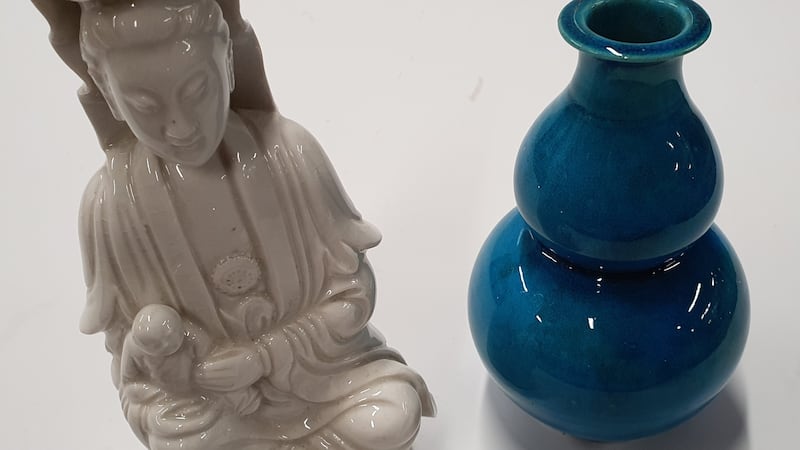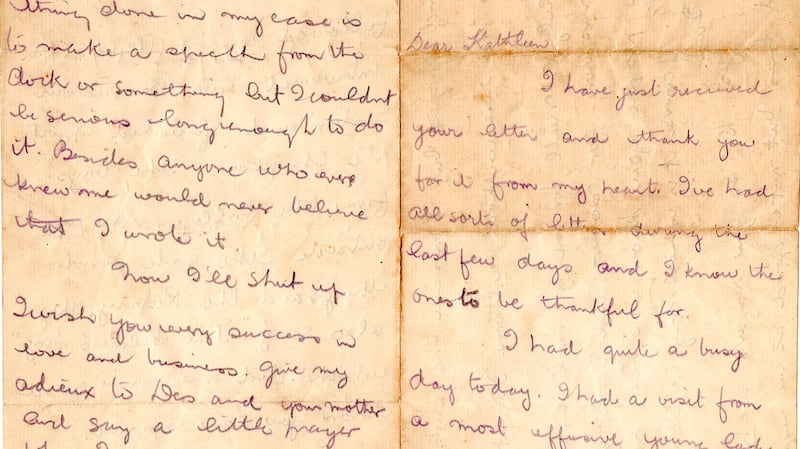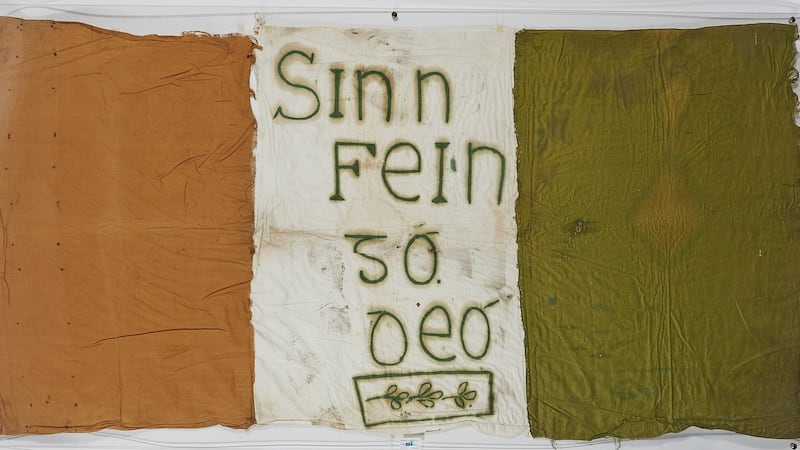Two upcoming sales on Saturday, May 15th offer an eclectic mix of memorabilia and furniture. Sean Eacrett’s sale of the contents of Killinagh Lodge include what the auctioneer calls some “chancy” lots of oriental artefacts from the collection of Xandria Williams.
Not everyone can trace their ancestors back to 430AD, but Xandria Williams is not a run of the mill woman. The 80-year-old can trace her family’s lineage back to a combatant in William of Orange’s army at the Battle of the Boyne, when a daughter of the Williams of Brecon Castle in Wales was sent to Rosslare and married a local chieftain.
A note in her family bible says a captain also came from Brecon Castle with William of Orange and fought against the troops of King James at the Boyne. This captain built Williamstown House near Carbury in Kildare; the Palladian manor attributed to Nathaniel Clements – and where Killinagh Lodge was constructed – when the Williamstown estate was sold.

But Williams says she can also trace her family roots all the way back to the fifth century to the first king when the Romans left the United Kingdom, and the ring she wears on a daily basis bears two seals: the family crest, which she says was given by Henry VIII and ratified by Elizabeth I, and the flip side is an individual crest and seal.
Alpaca
Now based in London, the Dublin-born octogenarian is still working as a naturopathic medicine chemist from her practice in the UK. Her work as a mining geochemist, took her all over the southern hemisphere until she came back to Ireland to take care of her aunt Shelagh who passed away in 1999.
“I inherited two ducks, two dogs, two donkeys, six cats, 15 acres of Irish bog and a senile uncle,” she laughs.

She remained at Killinagh Lodge, taking care of her uncle after her aunt died. In her tenure at Killinagh, she became the first breeder of alpaca in Ireland, where she ended up with 130 of the South American mammals, and now says it breaks her heart to sell the lodge and its contents, but the combination of work, a new hip and the pandemic have restricted her movements over the past two years.
The sale of more than 800 lots includes a 19th century mahogany long case clock by Alex Gordon of Dublin (lot 24, €2,500-€3,500) and a pair of Georgian mahogany Irish brass bound peat buckets (lot 559, €2,000-€3,000). The oriental collection of artefacts which Eacrett thinks may well include some oriental treasures, lists two cream crackle effect pots and vase (lot 570, €200-€400); an early bronze sensor (lot 572, €200-€400) and a 19th century oriental Blanc de Chine Quan Yin figure along with a blue Chinese double gourde vase (lot 610, €100-€200).
The highlight of the sale is a painting dating from the mid-1700s of Williams' ancestor Mary Ann Williams, who was second generation from the family who arrived for the Battle of the Boyne (lot 735, €1,500-€2,500).
Bronze Age at Whyte’s
Whyte’s Eclectic Collector sale on the same day, May 15th, goes back to the Bronze Age, with a sword made about three thousand years ago discovered in Co Fermanagh in the 1950s (lot 1, €4,500-€5,500) to the youngest (lot 265) – a 1998 Good Friday Agreement, signed by many of the negotiators and expected to achieve between €5,000-€7,000.
The top lot in the sale (lot 173, €60,000-€80,000) is the last letter written by Irish Republican soldier Kevin Barry, hours before he was executed in 1920. Written to Kathleen Carney it finishes poignantly: "Say a little prayer when I cash in, your pal, Kevin". About eight hours later the 20-year-old Irish Volunteer was hanged, as he was sentenced by court-martial for killing a soldier in an attack to capture arms.


"Barry's signature is much prized by collectors as they are rare, given that he died so young," says auctioneer Ian Whyte, and this sale includes four of Barry's schoolbooks, including his French book, signed "K. Barry, Loyalist of Irish Republic" when he was about 15 (lot 178, €1,000-€1,500).
Also listed along with a great range of historical documents, 1798 Rebellion pikes, 1916 rising medals, coins that include King James II Gun Money, is a 1916 Sinn Féin tricolour flag, which was recovered from Dublin Castle yard where it had been dumped by British troops. It is described in the catalogue as: “An extremely rare, fully provenanced flag of the 1916 Rising, of immense historical importance” (lot 136, €25,000-€35,000).
For Joycean scholars, along with two first editions of James Joyce’s Ulysses, is lot 403: two signed handwritten verses by Joyce on calendar entries which are framed as one, from March 17th, and November 3rd, 1939 with simple ditties, which is expected to fetch between €6,000 to €8,000.
seaneacrettantiques.ie
whytes.ie













